Physical Address
304 North Cardinal St.
Dorchester Center, MA 02124
Physical Address
304 North Cardinal St.
Dorchester Center, MA 02124
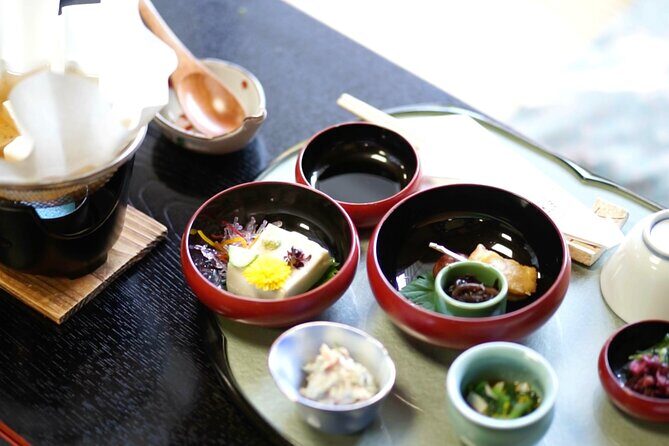
Experience Japanese craftsmanship through a 7-day journey exploring tea ceremonies, pottery, lacquerware, and Zen traditions across Kyoto, Uji, and Aizu.
Exploring Japan’s Craftsmanship: A 7-Day Tea and Art Tour in Kyoto, Uji, and Aizu-Wakamatsu
This comprehensive 7-day tour offers a fascinating glimpse into Japan’s revered craftsmanship surrounding the tea ceremony, traditional pottery, lacquerware, and Zen practices. Designed for those eager to appreciate the artistry behind Japan’s cultural staples, this experience combines hands-on activities, historical insights, and authentic local encounters. With bilingual guides fluent in both English and Japanese, you get a tailored, immersive journey that balances education with genuine cultural interaction.
One of the best aspects of this experience is its detailed focus on craftsmanship, from the spiritual side of tea to the artisanship of lacquerware and pottery. You’ll learn from local experts, visit historic sites, and participate in traditional ceremonies that reveal the depth of Japanese artisanal traditions. However, the tour’s high price tag might be a consideration for some travelers, especially those seeking more independent or budget-friendly options. Still, for those who value quality, depth, and a well-curated cultural experience, this tour offers remarkable value.
This experience suits travelers who crave a deeper understanding of Japan’s traditional arts and are comfortable with a moderate physical activity level. It’s ideal for those who enjoy learning through participation and are interested in the finer details of craftsmanship that often go unnoticed. If you’re passionate about Japanese culture or looking for a meaningful, artisan-focused adventure, this tour could be just the ticket.
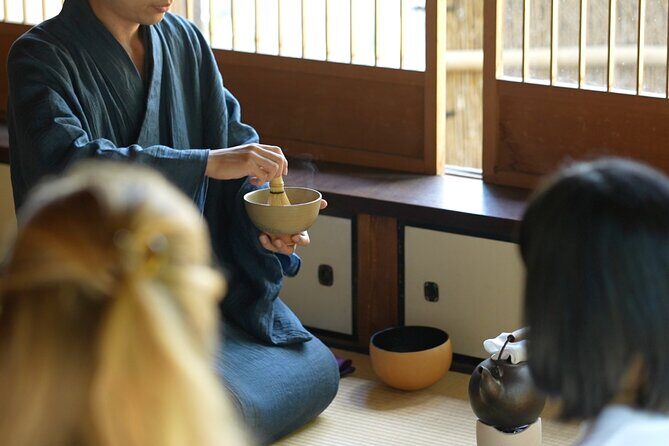
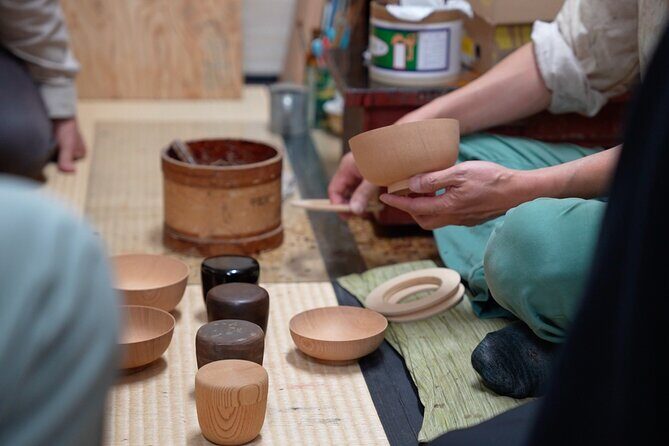
Looking for more options in Kyoto? Here are some other experiences worth considering.
The tour begins in Kyoto, a city synonymous with traditional arts. Your first stop is the orientation at a dedicated event space, where you’ll meet your guides and fellow travelers. From there, you’ll visit the Shimogoryo Shrine—a site that illustrates the connection between water and tea—setting the tone for what’s to come. Exploring the shrine’s tranquil surroundings, you’ll start understanding how water quality and flow are vital to the tea ceremony.
Next, you visit Dairiku Amae’s house, where a young tea practitioner guides you through a tea ceremony. It’s a chance to observe the delicate choreography and spiritual nuances that define Chanoyu, Japan’s traditional tea ritual. The visit to lacquer craftsman Keiko Nishimura gives insight into one of Japan’s most revered arts—lacquerware—highlighting the finesse involved in crafting everyday objects into fine art.
On the second day, a morning Zen meditation session at Daitoku-ji Temple with Chief Monk Seizan Toda offers a calming, introspective experience, bridging the spiritual and artisanal themes. The included shojin-ryori meal exemplifies traditional Buddhist cuisine, emphasizing mindfulness and simplicity. The afternoon is free for exploring Kyoto’s charming streets, offering a relaxed space to absorb the city’s historic charm before a welcome dinner at a traditional Kyoto townhouse.

Traveling to Uji, the renowned tea-producing region, marks a highlight of the trip. Local expert Toshiyuki Matsubayasi introduces you to the history and culture of Uji—not just a place to buy tea, but a hub of centuries-old cultivation and craftsmanship. You’ll learn about traditional cultivation methods and see the Horii Shichimeien tea wholesaler, getting a close look at how high-quality tea leaves are dried and processed.
Later, you’ll spend several hours at Asahiyaki, a 400-year-old pottery workshop where master artisans create Uji’s signature tea ware. The chance to see old techniques in action, ask questions, and understand the importance of pottery in tea culture makes this a particularly engaging stop. The craftsmanship here is meticulous, emphasizing the importance of both form and function in tea utensils.

Crossing from Kyoto to Fukushima, the journey shifts from Kyoto’s refined elegance to Aizu’s rugged, hands-on craftsmanship. After arriving, the focus turns to lacquerware production, a craft that’s deeply embedded in the local identity. Visiting Tenneiji Soko, you’ll witness the full process: from cultivating lacquer trees to the final finishing. You’ll meet artisans like Ms. Utsumi Shiho, the last in a line of master lacquer brush makers, and even participate in the inner lacquer coating stage—an intimately detailed process that leaves a lasting impression.
The visit to Oyakuen Garden adds a botanical element that links neatly to the tea ceremony’s connection with nature. It’s a peaceful stroll that underscores how Aizu’s craftsmanship extends beyond lacquerware into gardening and herbal medicine.
A highlight is the outdoor Nodate tea ceremony around Tsurugajo Castle. Unlike Kyoto’s formal indoor ceremonies, this outdoor version is intimately tied to daily life, offering a casual, accessible taste of local traditions. It’s an authentic experience that emphasizes community and natural beauty.
The final day in Aizu includes a reflection session at Tenneiji, where you can consolidate your understanding of the craftsmanship learned. The departure from Aizu involves traveling back to Tokyo, with a stop at Tokyo Station, where you’ll check into your hotel—perfect for unwinding after an immersive journey.
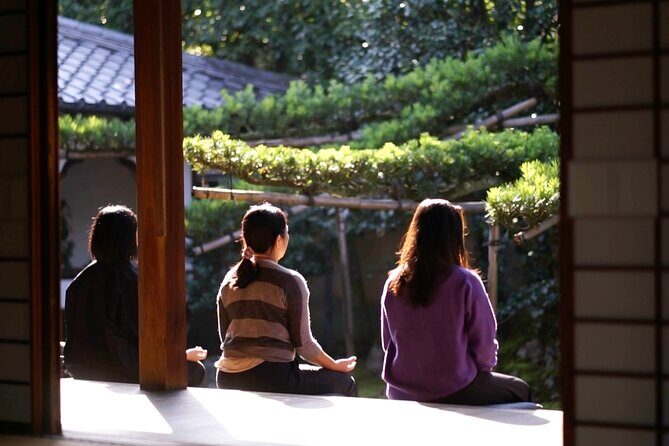
Transportation between cities is smooth, with a combination of taxis, flights, and charter buses arranged seamlessly. The daily schedule is packed but well-paced, with enough free time for personal exploration or rest. The price of over $30,000 per group might seem steep, but it covers many inclusions—meals, transportation, entrance fees, expert guides, and exclusive craft experiences. Reviewers have noted the depth of knowledge and personalized attention from guides, making the cost more justifiable.
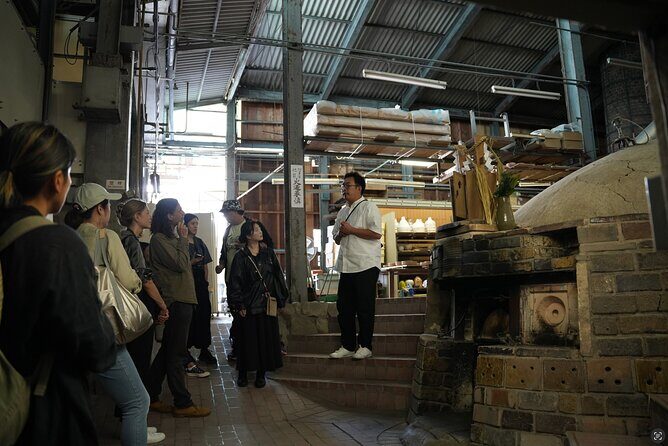
We loved the genuine access to artisans and the chance to see traditional crafts in action. The tour isn’t just a sightseeing trip; it’s an educational experience that deepens appreciation for Japanese arts. The bilingual guides, like Mr. Toshiyuki, are a real asset, making complex techniques accessible.
However, the intensity of the schedule, especially on travel days, can be tiring. The high cost might be a barrier for some, especially if you prefer independent exploration or are on a tighter budget. Travelers should also be comfortable with moderate physical activity, as there are walking and hands-on activities involved.

This tour is perfect for travelers passionate about Japanese culture, arts, and spiritual practices. It’s ideal if you want a well-rounded, curated experience that combines participation, learning, and authentic cultural encounters. If you enjoy craftsmanship, history, and small-group tailored experiences, this will be a memorable journey. Be prepared for a significant investment, but one that delivers deep insights and exclusive access to Japan’s craftsmanship traditions.
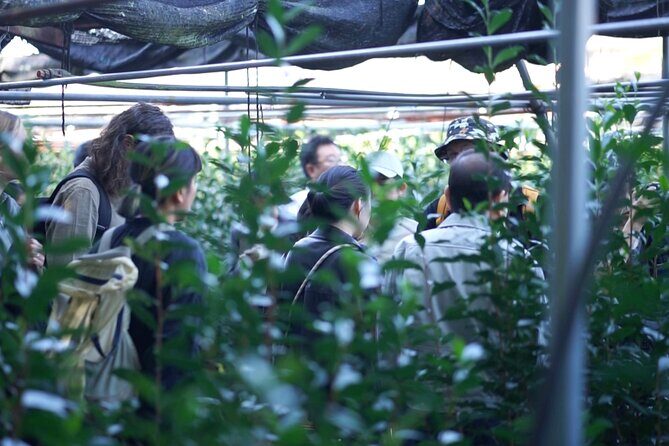
Is this a private tour? Yes, this is a private tour for your group, ensuring personalized attention and flexibility.
What’s included in the price? The tour covers meals, transportation, all listed experiences, guides, and entrance fees. It also includes optional breakfasts, lunches, and dinners.
Are the guides bilingual? Yes, guides are proficient in both English and Japanese, helping bridge language gaps and enrich your understanding.
How physically demanding is the tour? Moderate physical activity is involved, including walking and participating in craft activities. Participants should be comfortable with this level of activity.
What are the main highlights? The highlights include tea ceremonies at Daitoku-ji, visits to Uji’s tea producers and pottery workshops, and Aizu’s lacquerware centers and outdoor tea ceremony.
Can I customize the experience? As a private tour, some customization might be possible by discussing your preferences with the provider, but core activities are fixed.
How long are the travel days? Travel days, especially between Kyoto, Uji, Aizu, and Tokyo, are well-organized but can be long, with flights and transfers included.
Is there free time? Yes, you’ll have some free time in Kyoto and Aizu for personal exploration or rest.
What is the best time of year for this tour? While not explicitly stated, spring and autumn are typically ideal in Japan for comfortable weather and scenic beauty, enhancing the experience.
For those with a passion for craftsmanship, a curiosity about Japanese traditions, and the desire for a well-curated cultural journey, this tour offers a rare, in-depth look into some of Japan’s most cherished artisanal arts. The combination of hands-on participation, expert guides, and authentic sites makes it a truly rewarding experience—if the investment aligns with your travel priorities.